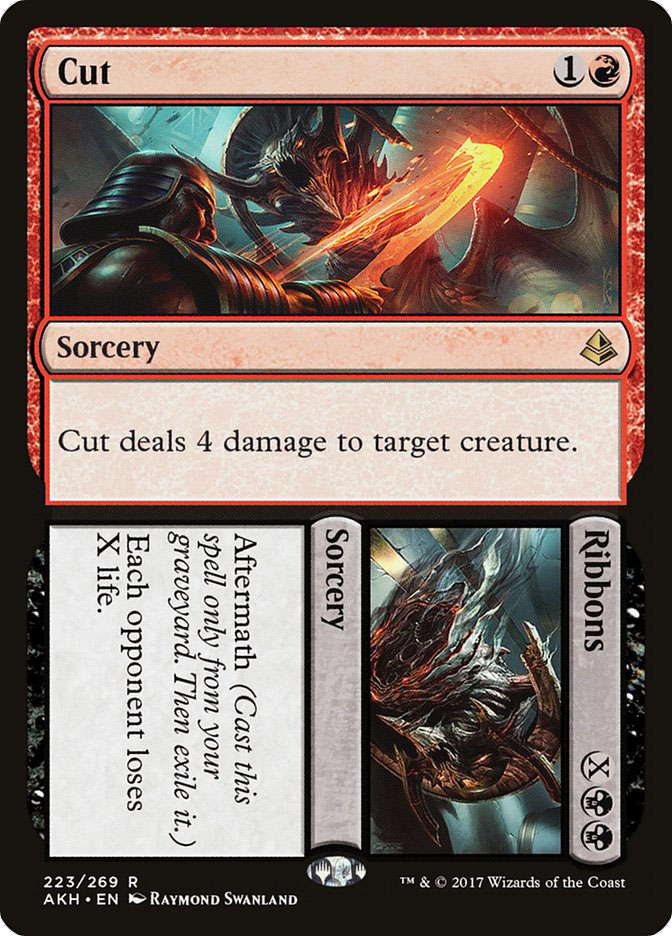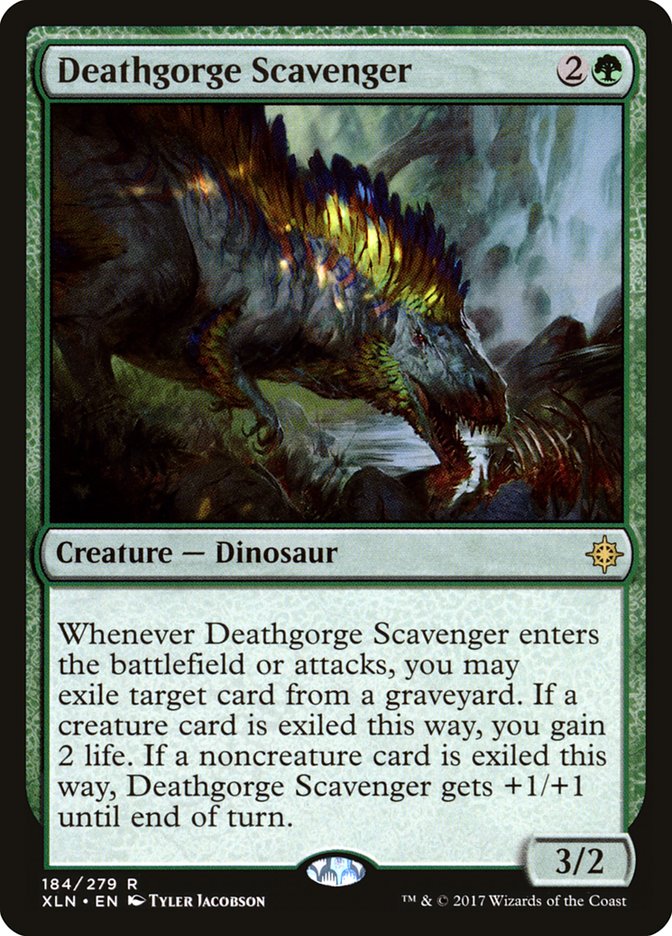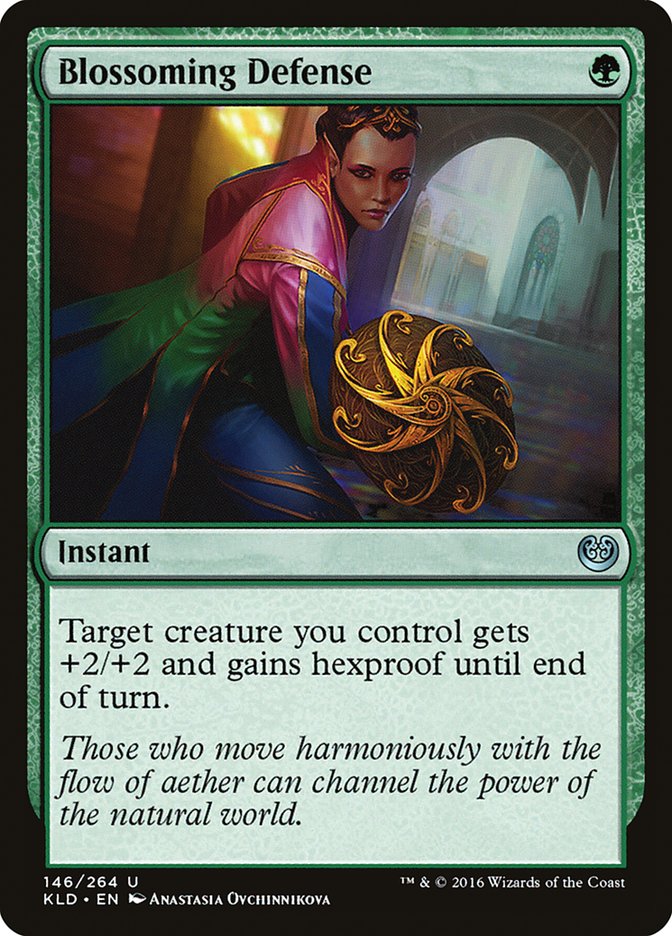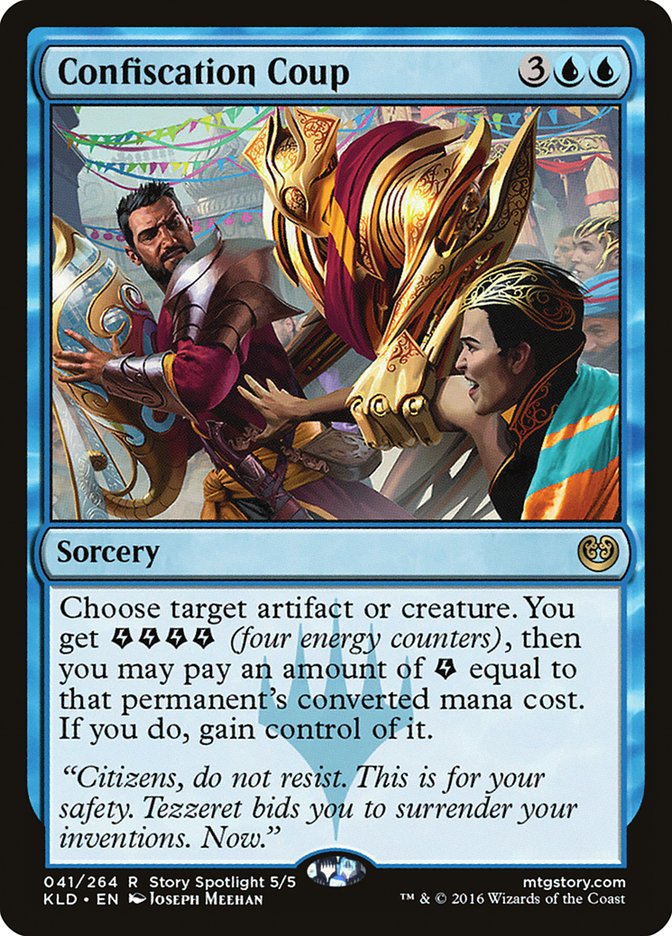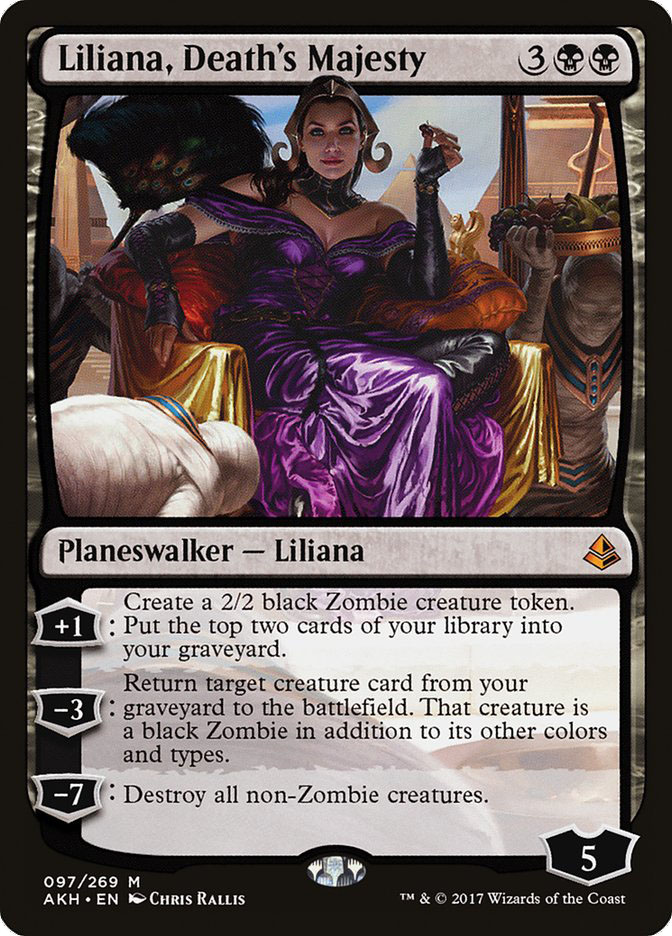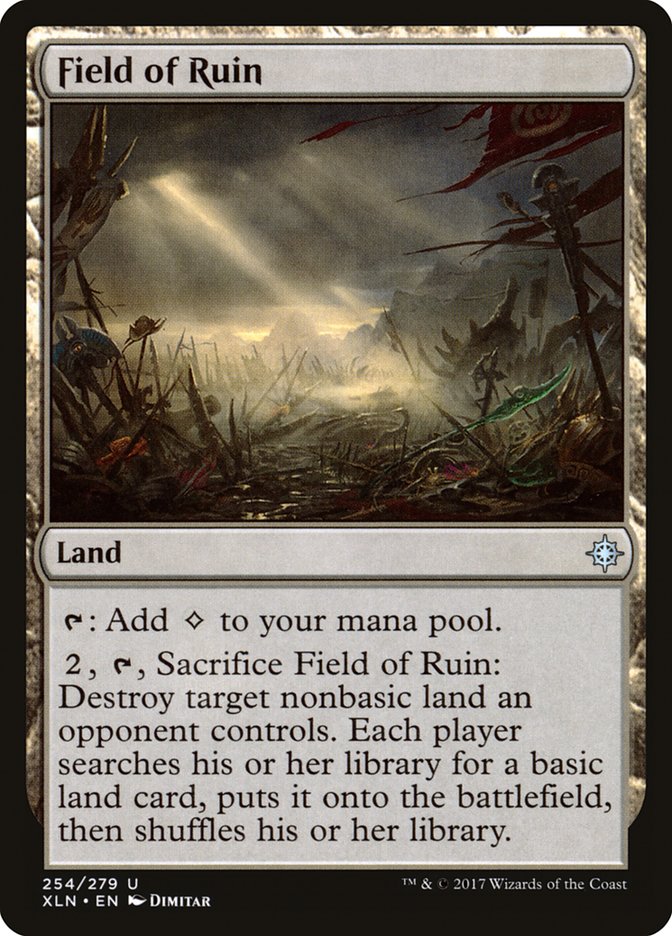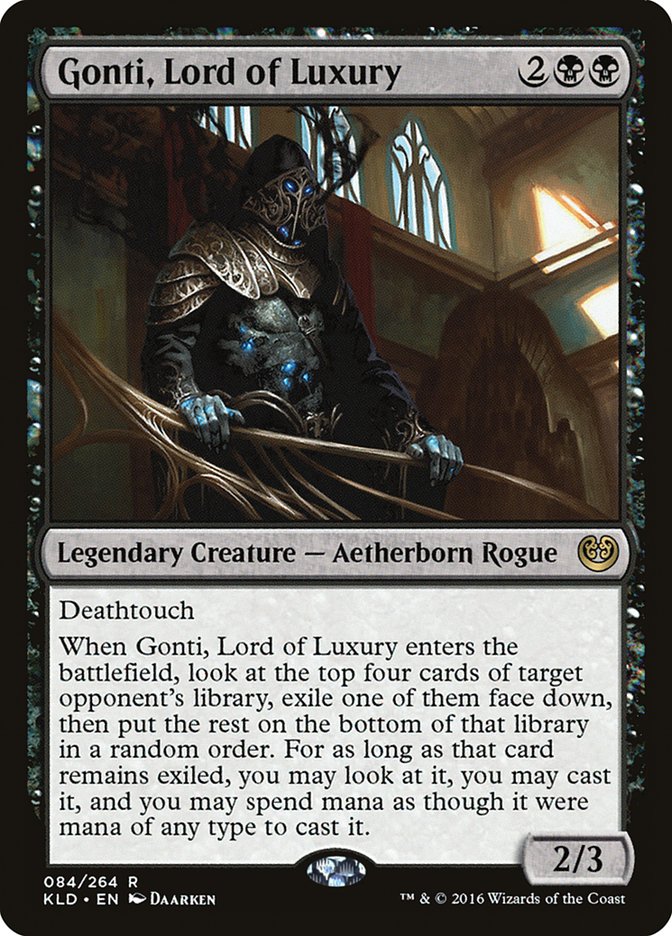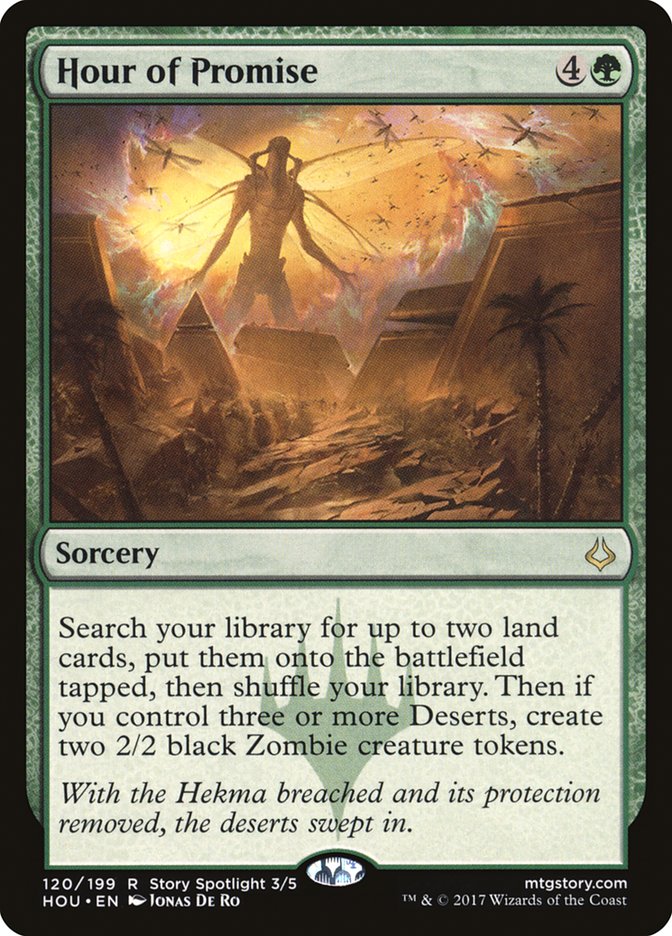Standard hasn’t been given much of a spotlight lately. From the most recent
Pro Tour being Modern to the recent unbannings of both Bloodbraid Elf and
Jace, the Mind Sculptor, all eyes have been on the Modern format. That’s
not a coincidence.
It’s a surprise to exactly no one who plays Magic on a regular basis that
Standard has been pretty mediocre over the last few years. Big changes have
come time and time again as Wizards of the Coast kept bringing the hammer
down on problematic cards, all with the intent of balancing out the format.
But every time a new set came out, or a new set of cards were banned,
something else would take the reins and beat us over the head until we
decided to…well…play more Modern.
But for the first time in a long time, Standard is actually pretty awesome.
All it took was banning ten cards in the last two years. Regardless, what
we have now is a Standard format that looks great while also giving players
the ability to choose between a number of different strategies. There are
still some powerful annoyances like The Scarab God that can ruin any good
game, but that just means we need to make sure we can answer it. And if
I’ve learned anything over the last month of playing Standard, it’s that
people are coming ready to fire at The Scarab God with all they have.
But while Standard hasn’t had much of a tournament spotlight, there are
still a lot of people playing it on Magic Online, StarCityGames.com
Standard Classics, and writing about it. I’ve tried out a number of
strategies myself, but I still haven’t found that special something that is
right for me. But I have learned a lot, and today I’m going to share with
you some of the most underrated cards in the current Standard.
I want to be clear: these cards are not “unknown gems that no one is
playing.” These are cards that crop up now and again, in small numbers, and
are generally pretty powerful. Many of these cards have also seen a lot of
play in the past across various archetypes, but the deck they called home
was dismantled thanks to bannings or rotations. And while some people still
play a few of these cards, I think these eight are being criminally
underplayed. Even decks that are playing one or two should likely move that
needle to three or four. Regardless, let’s go ahead and jump right in.
8.
Split cards rarely have trouble finding a home, especially so when they are
as powerful as something like Cut. The front half is a very solid removal
spell, while the back half can end the game on the spot if it goes long
enough. And in this format, games tend to be on the longer side unless
you’re playing with or against Mono-Red.
I think the part people are scared about the most in regards to Cut is that
it doesn’t exile, and is fighting for space with both Abrade and Harnessed
Lightning. I could be wrong here, but I would be very happy playing three
of this card in any B/R/X strategy, and especially so if I were playing
with an aggressive slant to my deck. All these Grixis Energy decks seem
like a fine home, but there is only so much room for removal. Fatal Push
and Harnessed Lightning make fitting this card into the mix quite
difficult, but I think it deserves a second look.
I would look to find a home for this card in a deck that doesn’t really
care about energy, so that it won’t sit on top of Harnessed Lightning.
Alongside Abrade and Fatal Push, it could fill up your removal suite
nicely. I’m looking at you, Jund Monsters guy.
7.
This green sleeper was my pick to straight up replace Rogue Refiner once it
got the axe from Temur Energy, but it didn’t really pick up steam. The
exile ability goes well with non-exiling removal like Harnessed Lightning,
giving you a one-two punch for killing The Scarab God permanently.
But more importantly, Deathgorge Scavenger gives your green deck the
ability to contain your opponent’s graveyard without investing very much.
There are so many decks in Standard that use the graveyard, even if only
for one or two small things, and a single Deathgorge Scavenger can ruin
those plans. There are so many creatures with embalm or eternalize that
playing Deathgorge Scavenger alongside normal removal just seems like a
no-brainer.
It also attacks for four damage a turn for three mana. Against a control
deck, it can help close the game quickly alongside one other threat, all
while keeping their Search for Azcanta from flipping or shrinking their
targets for Torrential Gearhulk. Against aggressive strategies, gaining two
life for exiling a creature is also huge. This is especially relevant when
trying to race Hazoret the Fervent or creatures that keep you from
blocking. And when you’re pairing your removal with Deathgorge Scavenger
against something like Mono-Red or Mardu Vehicles, they’re usually forced
to kill it on the spot. Otherwise, the four or more life you gain with it
will steal game out from under them.
6.
Blossoming Defense is a card close to my heart. Ever since I started
playing Infect and Bant Heroic, I was hooked on cheap cards that could
protect small (but important) creatures. And while Blossoming Defense is a
card strong enough to see play in Modern, I really didn’t expect it to fall
so much out of favor in Standard.
But I think that tide will turn soon. Exiling creatures is all the rage
right now, thanks to our good friend The Scarab God (and his pals Hazoret
the Fervent and Rekindling Phoenix). And because you need removal that can
exile creatures, the removal tends to cost more mana. How much of a blowout
do you think it would be if your opponent tapped four mana for Ixalan’s
Binding or Vraska’s Contempt, only to get wrecked by a well-timed
Blossoming Defense?
But cards like Blossoming Defense are only as good as the creatures it’s
protecting. Creatures like Merfolk Branchwalker dying is whatever, but when
you can keep your Glint-Sleeve Siphoner or Electrostatic Pummeler alive for
one more turn, the damage is likely already done. I will say that
Blossoming Defense is a card that is usually pretty weak when you draw
multiples, but the first one is going to be phenomenal. And if you’re
playing a deck with one or two very important creatures, a single
Blossoming Defense can be the difference between losing and winning a
match. Not every green deck is going to want Blossoming Defense, but the
card is too good to stay on the sideline much longer.
5.
If you can’t exile’em, steal’em. Confiscation Coup was one of the stronger
top-end plays from Temur Energy but nearly fell off the map when Rogue
Refiner and Attune with Aether got banned. I think people are under the
impression that you need a lot of energy for Confiscation Coup to be good.
You don’t.
By itself, Confiscation Coup will steal most creatures. And, if you’re
really hurting to make it into a Control Magic, just come ready with two or
three other ways to gain small amounts of energy. Aether Hub, Harnessed
Lightning, Glint-Sleeve Siphoner, and Whirler Virtuoso are all fine
energy-based cards that can be played outside of a true energy sub-theme.
Any of these cards paired with Confiscation Coup will take most creatures
in Standard.
One of the biggest blowouts in “fair” Magic is a two-for-one trade. Those
two-for-one trades are even more devastating when you gain a significant
battlefield advantage. Confiscation Coup probably won’t see a ton of play
because of the five-mana cost, but I do think more blue decks should be
playing two of them in their 75.
4.
While Liliana, Death’s Majesty hasn’t lived up to the hype just yet, I
think the current Standard format is ripe for her return to glory. Five
mana to return a creature from your graveyard to the battlefield is on-par
with mana cost these days. You just need a way to get something into the
graveyard. Luckily, Liliana, Death’s Majesty can also get that done for you
while producing some 2/2 bodies to protect herself.
While black is fighting in the five mana slot thanks to The Scarab God, a
few copies of Liliana, Death’s Majesty can go a long way. But again, the
effect of returning a creature from the graveyard to the battlefield is
only as good as the creature itself. And with “exiling” being the new craze
(sing it!) thanks to The Scarab God, you might not have anything sweet to
bring back if you don’t put it there yourself.
What I love about Liliana, Death’s Majesty is that it can bring back a
creature while producing a must-kill threat. Bringing back The Scarab God
leaves you with two permanents that will effectively end the game if your
opponent doesn’t kill both of them immediately. And if your deck is chock
full of cheap removal like Fatal Push, the odds that your opponent can kill
The Scarab God and then attack Liliana, Death’s Majesty is pretty low.
There are so many good creatures in Standard right now that “do something”
when they enter the battlefield that I find it surprising that more decks
aren’t playing Liliana, Death’s Majesty. Even if all you do is make a 2/2
Zombie before it gets hit by a Vraska’s Contempt, you’re still leaving
behind a body that can pressure a Planeswalker or protect you from an
opposing attack. On top of that, if you end up milling over something like
Champion of Wits for later, you start to create a lot of lasting card
advantage as the game goes long. The value is there! We just need to find
the best shell for her.
3.
With Ixalan block having a big focus on cards that transform into
lands, and those lands having awesome abilities, I think most people are
aware of how good Field of Ruin actually is. What people don’t know is how
to build their deck in such a way that they can play four copies without it
hurting their ability to cast their spells. Playing three colors usually
puts you out of contention of playing Field of Ruin. Playing two colors in
a color-hungry deck like Merfolk makes that dream a bit more difficult. But
that’s the rub. Not every deck is going to be able to play Field of Ruin.
But that doesn’t mean more decks shouldn’t try.
Right now, combing through Magic Online decklists, I see a ton of people
playing Search for Azcanta, but that’s just one of many important lands
that you need to be able to interact with. Field of Ruin is already seeing
a ton of play in Modern, but that’s because Modern is a format where your
lands are incredibly important (and there aren’t a ton of basic lands to
search out). Field of Ruin is a great answer to a growing problem, and one
that can be adopted in just about any strategy, so long as you’re willing
to make sacrifices on what spells you put in your deck.
Decks with significant color requirements will have a very tough time
implementing this card, but I’m also finding a ton of other strategies that
could easily adopt one or two copies of this powerful land. And while it
won’t always be worthwhile, and will occasionally hurt your ability to cast
spells, I think it more than deserves some attention in Standard.
2.
Gonti, Lord of Luxury has often been a phenomenal card in midrange
matchups, and right now is no different. With games going longer and
creatures generating small advantages here and there (think Explore),
you’re going to be playing against opponents who want to make it to the
long game. After all, how else are you going to dominate your opponent with
The Scarab God if you can’t make it to the late game?
When everyone is trying to go big, you should start playing cards like
Gonti, Lord of Luxury to punish them. Take their Torrential Gearhulk. Take
their Glorybringer and bash their head in with it. Hell, take their Fatal
Push and kill their Glint-Sleeve Siphoner. Gonti, Lord of Luxury is also a
pretty fine card in tandem with Liliana, Death’s Majesty. Talk about value!
While people have been playing Gonti, Lord of Luxury in Standard since it
was printed, I think right now is a prime time for it to shine. You get
card selection, card advantage, and a decent body to block (and trade) with
just about anything in Standard. That’s a great card at four mana if you
ask me.
1.
I’m surprised that Hour of Promise isn’t seeing more play, but I think it
will be one of the breakout spells in the coming weeks. For one, if games
are going longer, that means you want to play cards that gain you card
advantage, mana advantage, and build towards winning a long game. Hour of
Promise also creates blockers, threats to pressure Planeswalkers, and pumps
you all the way up with four permanents to trigger the city’s blessing
alongside Arch of Orazca.
With so many lands in Standard that could give you a slight edge (Ifnir
Deadlands, Scavenger Grounds, Arch of Orazca), having a card that can tutor
them out is pretty awesome. While you will need to be playing a healthy
number of Deserts in order to get the Zombies, many of those Deserts are
quite good. Some cycle, some hit your opponent’s graveyard, some kill
creatures, and so on. Figuring out the right Desert count and which ones to
play, will be key in making this card perform at an optimal level.
While we’re no longer going hard with Hour of Promise to fetch two copies
of Shrine of the Forsaken Gods, topping the game off with a hardcast
Ulamog, the Ceaseless Hunger, we can still find a lot of ways to make it
useful. Arch of Orazca seems like the most profitable way to gain advantage
by having a lot of extra mana, but I could see playing a couple of small
packages that combo well with Hour of Promise that allow you to do other
things. For example, you could just use Hour of Promise to fetch two lands
that produce an off-color, which then allows you to cast something like
Nezahal, Primal Tide. Perhaps not exactly what we will want, but you get
the idea.
Cards that ramp for two lands are traditionally good in Standard. Cards
that find any two lands and put them directly onto the battlefield is
almost unheard of.
…
Well, that’s all for today. I hope you enjoyed reading about these
underrated cards. There are so many new things to explore in this Standard
format, and I want to try them all! My next project? It will likely look
something like this (spoiler: Dr_Smiles is a genius):
Creatures (4)
Planeswalkers (2)
Lands (26)
Spells (28)



